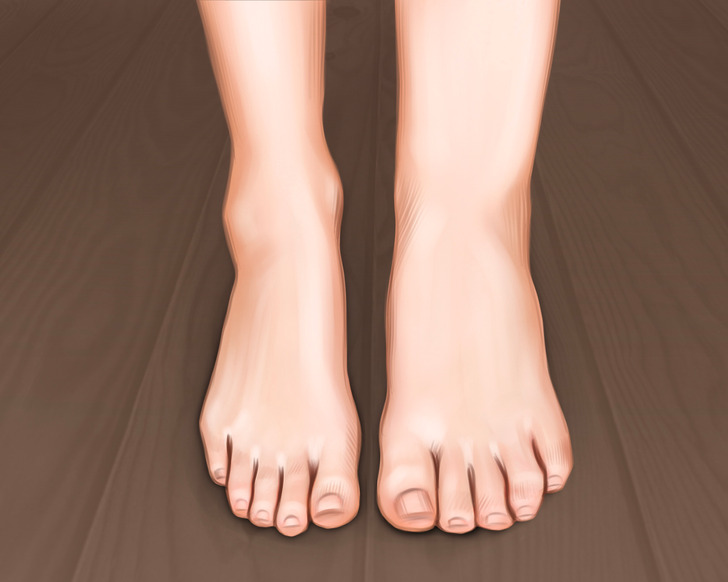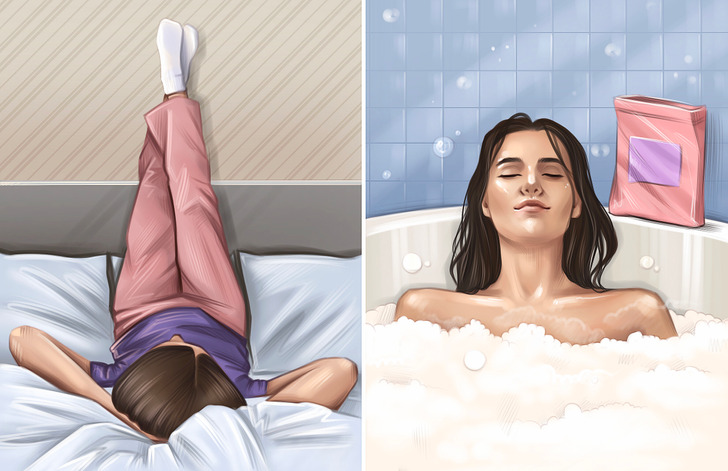Why We Get Edema, and How to Avoid It
5-Minute Crafts found out what edema is and learned what actions can help decrease the chances of its appearance.
❗ The article is for informational purposes only. Only a specialist can make a real diagnosis and prescribe treatment if necessary.
What edema is

Edema is a pathological accumulation of liquid in body tissue. Most often, it appears on the legs, like in the feet, ankles, and shins. However, they can also appear on other body parts, including the face, hands, and belly, as well as spread all across the body.
Signs that you might have edema:
- The affected area is swollen and has increased in size.
- The skin over the swollen area looks stretched and shiny.
- If you press the swollen area with a finger for 5 or more seconds, a dimple in the skin will appear.
- Walking issues have developed.
Though slight swelling can appear for harmless reasons, there are cases when it’s necessary to see a doctor.
See a specialist if the swelling and pain in the feet don’t go away. This may signal the formation of a blood clot. Also, see your doctor immediately if, along with swelling, you feel chest pain, shortness of breath, and difficulty breathing. These may be signs of pulmonary edema, which requires urgent medical help.
Why swelling occurs

The reasons for the appearance of minor edema:
- Staying in one position (sitting, for example) for too long
- Eating too much salty food
- A standard premenstrual symptom
- Pregnancy
- Taking certain medicine
Serious illnesses that might have edema as one of the signs:
- Cirrhosis: Fluid accumulates in the legs and the abdominal cavity as a result of liver damage.
- Congestive heart failure: The heart chambers lose their ability to pump blood effectively and it accumulates in the tissue.
- Kidney illnesses: Fluid normally forms in the legs and around the eyes.
- Damaged veins in the legs: The valves in leg veins are weakened, which allows blood to accumulate in leg veins, causing swelling.
- An inadequate lymphatic system
- A severe protein deficiency, which can cause the accumulation of fluid in the body.
How to reduce swelling

Ways to reduce swelling that occurs during the day:
- Lift your legs above your head by lying on the couch and leaning your legs against the wall. This will allow draining of the fluid accumulated in the legs and reduce swelling.
- Try taking a 15 to 20-minute bath with Epsom salt.
- Try to move more to pump the excess fluid.
- Use compression socks and tights if the swelling of the legs is a regular ocurrance. They will cause slight pressure on tissue and improve blood circulation.
- Reduce the consumption of salt and increase the amount of liquid you drink.
- Perform some gentle exercises daily to improve blood circulation.
- Wear comfortable footwear with low heels.

Ways to decrease swelling on long trips and flights:
- Wear comfortable clothes.
- If possible, try to stand on your feet and take a short walk every hour. If that isn’t impossible, bend and unbend your legs at the knees, and tense your calf muscles.
- Don’t cross your legs when sitting, and try to change their position frequently.
- Try to drink a lot of liquid to prevent dehydration.